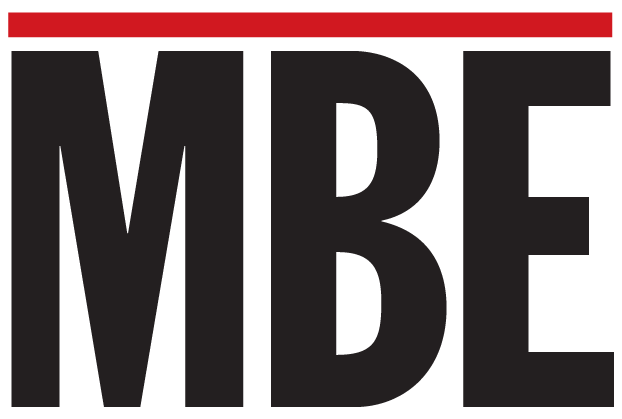
There is a nugget of truth underlying the debate around whether to invest in brand-based or performance-based marketing. In every organization, human and financial resources are scarce. Time and money are finite quantities. There’s competition for all of a marketing department’s resources, and both buckets can’t get their fill.
In reality, the buckets aren’t totally separate. Brand and performance can thrive in conjunction; investment in one area can benefit the other if executed correctly. In one survey of 270 B2B and B2C marketers, 72 percent agreed that the most effective way to generate growth is to utilize both sales activation and brand-building.
Performance marketing might hold the most appeal to a numbers-obsessed, results-driven executive. Most companies leverage such efforts to optimize ROI and produce highly measurable results, satiating the human desire for control and measurement. And yet, brand is still what sparks a feeling, creates an emotion and produces the potential for long-term actions. Each element is capable of driving growth on its own, but when unified they complement each other and unlock tremendous potential for growth.
What is brand-based marketing?
The goal in brand engagement is to create an emotional experience that’s “sticky” or lasting. Branding creates a shortcut in peoples’ minds that ties back to what a company can do for them. A potential customer is more likely to activate if the brand is familiar and clear.
All organizations need brand building because their landscape is ever-changing, with competition and peers actively positioning and repositioning their own brands. If you’re not adapting your story to your audience, another organization gladly will. It’s challenging to evolve your position from long-held market perceptions by infusing your present reality or future trajectory into the conversation without it.
Brand is critical in creating or enhancing customer awareness, shaping attitudes, fostering affinity and driving greater purchase intent. These are also the elements that build a strong foundation for a healthy organization and produce longer-term growth. The impact of an effective brand presence can significantly influence purchase decisions as well as overall brand equity. As a result, marketers strive to create it by focusing on key brand attributes and consistently deliver excellence in those areas to enhance overall brand perception.
Measuring ROI on brand-based initiatives
Brand-based marketing isn’t a black hole that cannot be measured. Brand marketing success can be measured based on long-term awareness as well as consideration metrics, such as:
- Brand awareness: This metric assesses the level of brand recognition and familiarity among the target audience and can be measured through surveys, and brand recall and brand recognition tests.
- Brand perception: This gauges how the target audience perceives the brand in terms of attributes such as quality, trustworthiness, innovation, or value. It can be measured through brand perception surveys or by tracking sentiment analysis.
- Brand associations: This focuses on the specific associations or characteristics that consumers attribute to the brand, and may include attributes like reliability, prestige, affordability, or sustainability.
- Brand consideration: This measures the likelihood of consumers considering the brand when making a purchase decision. It can be evaluated through surveys or by monitoring metrics such as website traffic, search volume, or social media engagement related to the brand.
- Purchase intent: This KPI assesses the likelihood of consumers intending to purchase from the brand in the future. You can measure it through surveys or by tracking conversion rates, shopping cart abandonment rates, or customer inquiries.
- Customer loyalty: This measures the level of loyalty and repeat purchase behavior among existing customers. It can be measured through customer retention rates, customer satisfaction surveys, or the Net Promoter Score (NPS).
- Share of Voice: This metric compares the brand’s advertising or marketing presence against its competitors within a specific market or industry, and can be measured by tracking media mentions, ad impressions, or social media mentions.
- Brand equity: Brand equity represents the overall value of the brand and its impact on customer choice and willingness to pay a premium. Brand equity surveys assess factors such as brand awareness, perceived quality, brand loyalty, and brand associations.
What is performance-based marketing?
Performance marketing refers to a form of digital marketing in which specific actions have been taken — a click, sale, or a lead. Instead of paying for an advertisement in the traditional way, these advertisers pay based on how well their ad performs, such as by measuring clicks, impressions, shares, or sales.
Revenue can be linked directly to any online ad spend, proving the success of the campaign and the value of your marketing team. In this way, performance marketing creates an efficient, fast approach to business growth that can produce immediate results and allows for sudden shifts. Performance marketing provides useful indications of what’s working and what’s not, so that you can shift priorities according to the data.
Performance activities focus on activation opportunities that lead to sales, create visits, schedule appointments, etc. Paid activity is used to generate leads, activations or conversions via clicks, cookies, even door swings (site/store visits). To realize these outcomes, organizations invest in tactics like SEO/SEM, CRM campaigns, content syndication, programmatics, social, social influencers as well as account-based marketing (ABM) partnerships. Hyper-targeted campaigns can maximize ROI and produce results that sales and marketing leaders are expecting.
Measuring performance-based marketing
In the neverending quest for immediate results, performance-based marketing yields several avenues to success.
- Real-time ROI measurements: You can easily keep track of ROI, and know how much you have to spend for achieving that goal. Performance marketing provides clear data while the campaign is running.
- Optimizing KPIs: With performance marketing, you can clearly define your key performance indicators. These KPls — app downloads, site traffic, comments and shares, for example — help in setting clear marketing goals for your business.
- Lead Generation: Performance marketing helps businesses to establish the brand and promote it among prospective customers to generate leads.
- Pay as the campaign continues: Rather than paying an upfront fee or deciding on a monthly payment to be released for the campaign, performance marketers charge every time a pre-decided goal is achieved.
- Transparency: Performance marketing is trackable, measurable, and transparent. Performance marketing helps a business decide where to invest, which partner to work with, and which channels are the most beneficial.
- Timing it right: By knowing at what time of day your ads get the highest click-through rates, you can buy those times with bid multipliers, increasing the chance of converting leads into paying customers.
Maximizing shared tools
Performance marketing and brand building impact current revenue and long-term value. Brand building and conversion marketing also leverage many of the same formats, albeit with different goals:
- Social Media Marketing: Use social media networks (i.e., digital content showcased on Facebook, LinkedIn or Instagram) to gain traffic and brand awareness. Social media is popular for B2B and B2C advertising, and offers some of the best targeting and tracking capabilities.
- Search Engine Marketing (SEM): This includes both organic and inorganic means of ranking on the search results. Performance marketing focuses on paid search using pay-per-click (PPC) marketing, which helps place your ad to increase visibility.
- Affiliate Marketing: This works in a very simple way: merchants pay commission to the affiliate for every referral or transaction, a popular method for businesses because revenue is gained before the money is spent.
- Native advertising: This is a form of paid media that, unlike display ads or banner ads, don’t truly look like ads. Native ads tend to follow the natural form and function of the site they’re placed on, such as news or social sites.
- Sponsored content: A form of native advertising and content marketing, sponsored content involves including a dedicated post or video on a website that publishes similar content.
- Search Engine Optimization (SEO): The opposite of paid search marketing, organic search uses unpaid methods such as search engine optimization (SEO) and relies on the search engine’s algorithm to rank in the top.
Conclusion
According to Nielsen, “Conversion-oriented marketing is appealing because it drives sales in this quarter, and the immediate gratification carries weight. But long-term business success requires more than repeat business among existing customers. And that’s why marketers should focus their efforts to ensure they insert a balanced share of voice in both their upper- and lower-funnel messaging.”
Although the two are often presented in conflict, brand- and performance-focused initiatives should go hand-in-hand in any marketing budget.













